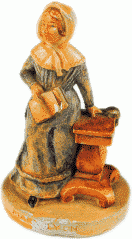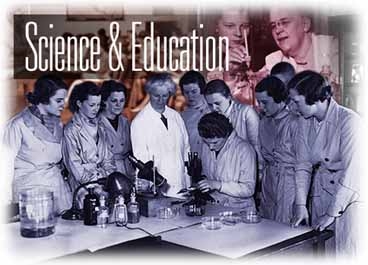
Mary Lyon porcelain miniature.
In addition to founding and funding the Seminary, developing curriculum, buying equipment, and hiring teachers and students, Lyon found time to teach chemistry and to deliver a talk to all the Seminary students at least once a day.
Mary Lyon was first exposed to the study of science at Sanderson Academy, where she took courses in geography and astronomy. Like all of her education, her scientific knowledge was gained by the "handfuls," obtained when she studied for short periods with prominent scientists and attended lectures at male academies and colleges. When Lyon was studying science in the early nineteenth century, cell theory had not yet been formulated; the first laboratory synthesis of an organic compound was still a few years away, and it would be decades before Darwin and Pasteur presented their revolutionary ideas. The distance between stars had yet to be determined. But research with precise apparatus by French scientist E. L. Lavoisier had paved the way for the founding of modern chemistry, the field that became Lyon's specialty.
In 1837, Mary Lyon was an educator ahead of her time. She required seven courses in the sciences and mathematics for graduation, a requirement unheard of at other female seminaries. She introduced women to "a new and unusual way" to learn science--laboratory experiments that they performed themselves. She organized field trips on which students collected rocks, plants, and specimens for lab work, and inspected geological formations and recently discovered dinosaur tracks. She invited distinguished scientists to give lectures, and inspired women to pursue careers in the sciences as college teachers and researchers. Mary Lyon herself taught chemistry. Her interest in the sciences and high expectations for women sparked a tradition of leadership in science education that continues to this day at Mount Holyoke College.



Explore the MHC Social Universe >